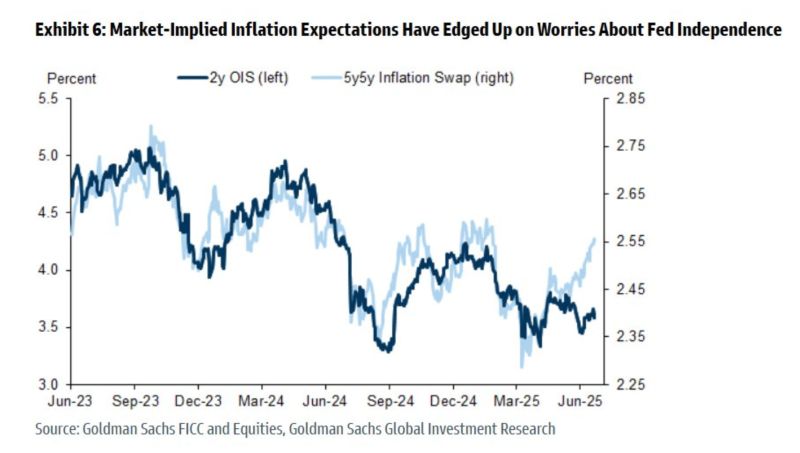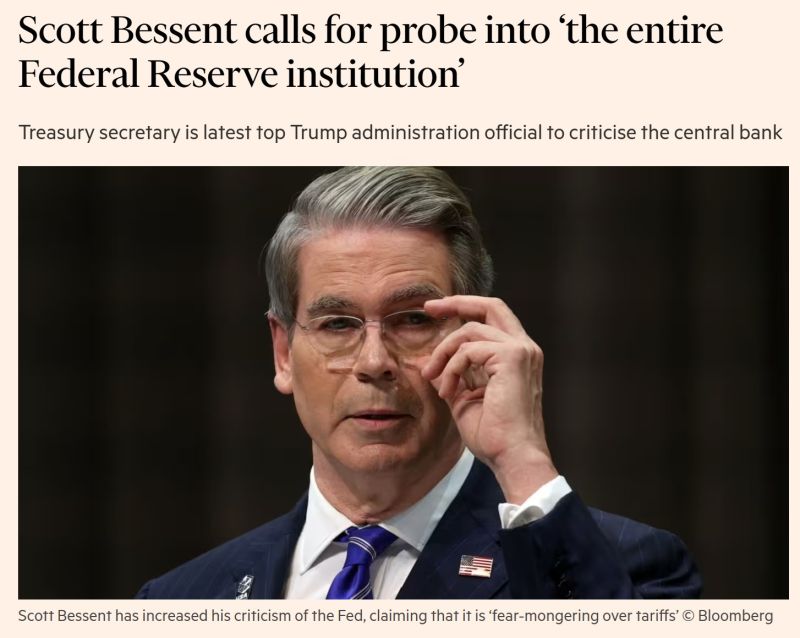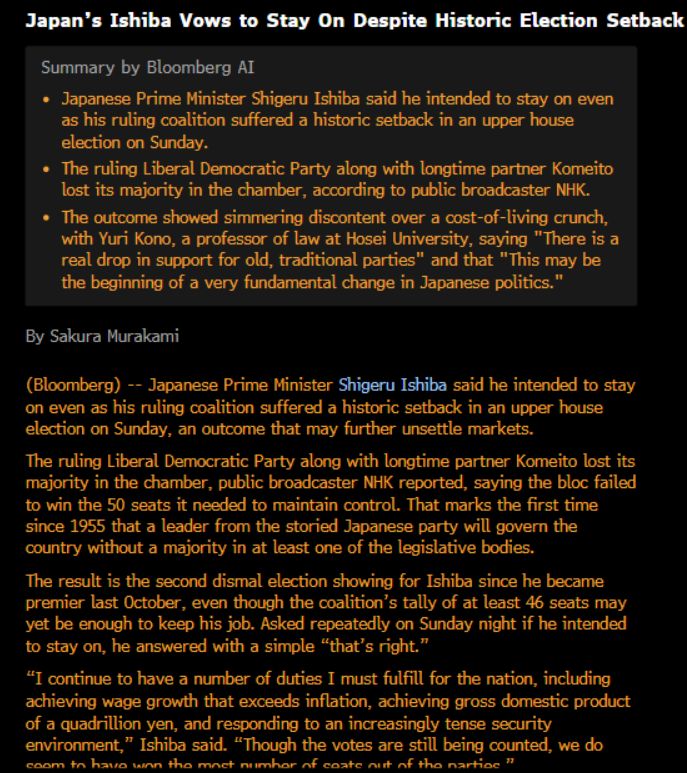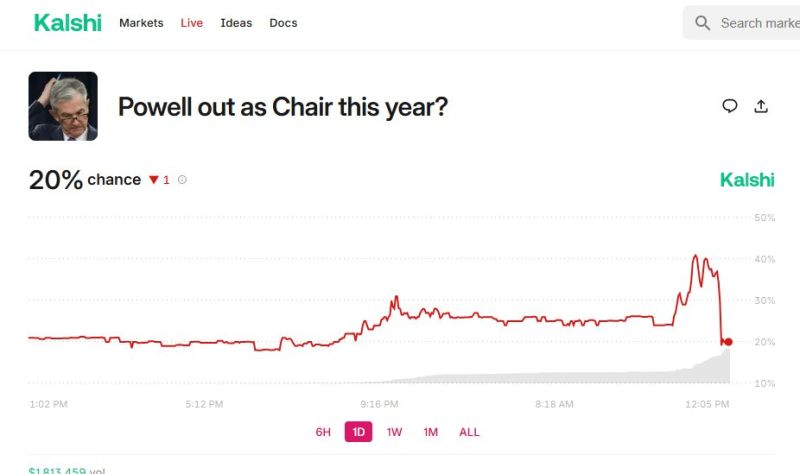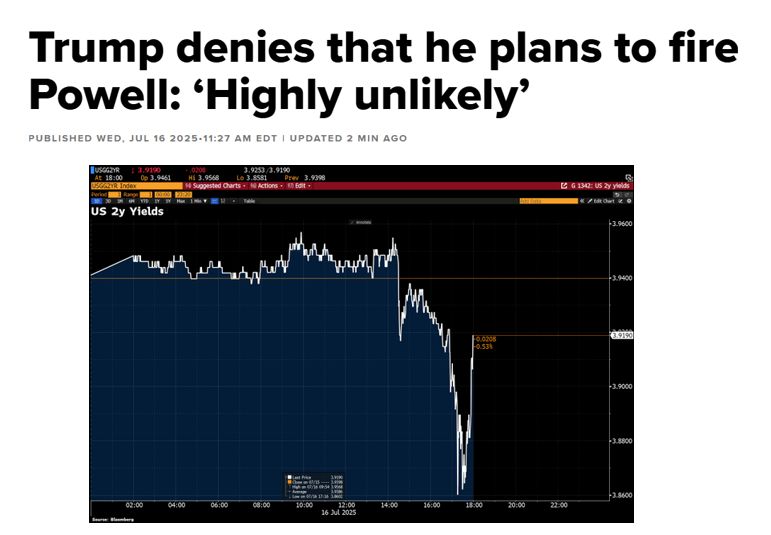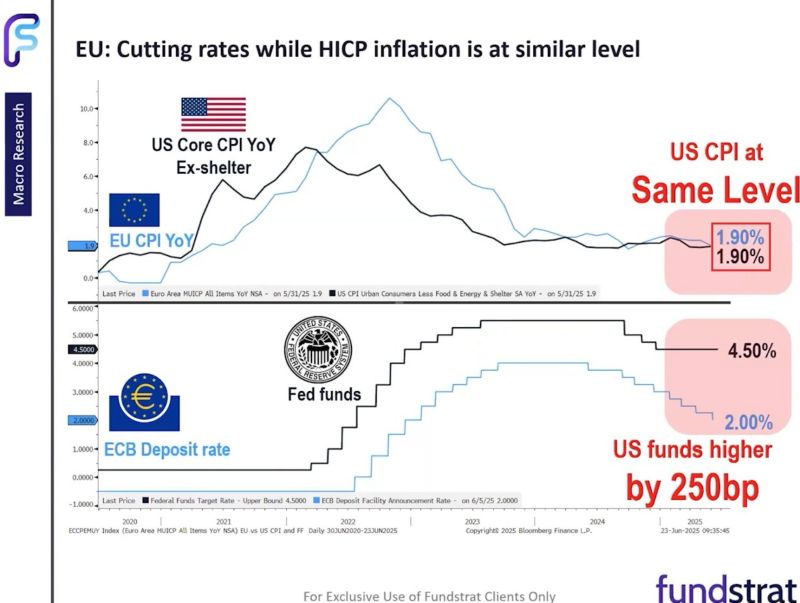Straight from the Desk
Syz the moment
Live feeds, charts, breaking stories, all day long.
- All
- equities
- United States
- Macroeconomics
- Food for Thoughts
- markets
- Central banks
- Fixed Income
- bitcoin
- Asia
- europe
- investing
- technical analysis
- geopolitics
- gold
- Crypto
- AI
- Commodities
- Technology
- nvidia
- ETF
- earnings
- Forex
- china
- Real Estate
- banking
- oil
- Volatility
- energy
- magnificent-7
- apple
- Alternatives
- emerging-markets
- switzerland
- tesla
- United Kingdom
- Middle East
- assetmanagement
- amazon
- russia
- ethereum
- microsoft
- ESG
- meta
- Industrial-production
- bankruptcy
- Healthcare
- Turkey
- Global Markets Outlook
- africa
- Market Outlook
- brics
- performance
BREAKING >>> Trump spars with Powell over renovation costs during Fed visit, but says not ‘necessary’ to fire chairman
Trump: It looks like it’s about $3.1 billion Powell: I’m not aware of that. Trump: It just came out Powell: You just added in a third building Trump: It’s a building that’s being built Powell: It was built five years ago. Source: @SpencerHakimian
The US president will spend about an hour at the central bank, as he looks to pressure its chair Jay Powell to cut interest rates more aggressively.
Source: FT
Goldman:
"Market participants seem to agree that the risk to Fed independence is rising, as 5-year 5-year forward inflation swaps have recently decoupled higher from their prior close relationship with the 2-year note yield." Source: Nick Timiraos
US Treasury Secretary Scott Bessent has called for an inquiry into the “entire Federal Reserve institution”
In the latest sign of how top Trump administration officials are cranking up pressure on the central bank. “What we need to do is examine the entire Federal Reserve institution and whether they have been successful,” Bessent told CNBC on Monday. Bessent’s comments come as Donald Trump and his lieutenants have sharply criticised the Fed and its chair Jay Powell for refraining to cut borrowing costs this year. Trump last week asked a group of Republican lawmakers whether he should sack Powell, but later clarified that he had no plans to do so unless he needed to “leave for fraud”. Trump’s government has also recently opened a new front in their campaign against the Fed, with the president’s budget director Russell Vought repeatedly alleging that a $2.5bn renovation of the central bank’s headquarters has been grossly mismanaged. Bessent amped up his criticism of the Fed on Monday, saying that if the Federal Aviation Administration had made as many mistakes, “then we would go back and look at why this has happened”. The Fed inspector general is reviewing the renovation of its headquarters, which involves an overhaul of two buildings that overlook the National Mall and is $700mn over budget. Powell has also written to senior senators to explain how the US central bank is reining in costs. Source: FT
⚠️ Japan House of Councillors Election – Key Takeaways for Markets & Policy
▶️ Political Setback: PM Shigeru Ishiba’s LDP-led coalition failed to secure a majority, increasing political uncertainty and likely altering fiscal and monetary trajectories. ▶️ Market Impact: Greater opposition influence may push for looser monetary policy, pressuring the BOJ to delay rate hikes. This could weaken the Yen further (note that this is NOT market's first reaction as the yen is strengthening today) and push JGB yields higher ▶️Fiscal Concerns: Opposition-backed tax cuts and cash handouts could deepen Japan’s already high public debt burden, risking credit rating downgrades and higher borrowing costs. ▶️ Geopolitical Risks: A weakened coalition may delay or derail a U.S.-Japan trade agreement ahead of the August 1st deadline, worsening trade tensions. 👉Investor Outlook: Expect a more fragmented & uncertain policy landscape. This could mean higher JPY & JGB volatility during the Summer.
Pop n drop... Powell canned odds from 20% to 40% to 20%
Source: Mike Zaccardi, CFA, CMT, MBA
What a mess... 🤡
*TRUMP ON FED CHAIR POWELL: WE ARE NOT PLANNING ON DOING ANYTHING *TRUMP ON POWELL: WE GET TO MAKE A CHANGE IN 8 MONTHS US 2-year hashtag#yields bounced back after President Trump says his administration is “very concerned”, but “not planning on doing anything” about Fed Chair Jerome Powell. Source: CNBC, Bloomberg, HolgerZ
This is probably what Trump doesn't like with the latest US inflation reports and subsequent inaction by the fed.
The EU inflation rate excludes shelter, do the same with US CPI, and they match. Yet Fed Funds is 250bps higher than the ECB rate. What Trump does not take into account is that the inflationary effects of tariffs might soon hit. Source: Mike Zaccardi, CFA, CMT, MBA, Fundstrat
Investing with intelligence
Our latest research, commentary and market outlooks




